Housing in Europe is pretty similar all over the continent. If you though that ugly panel block public housing exists only in former communist eastern block, you are WRONG. Western Europe have ugly public housing too, but it is hidden at city outskirts and built to improve standard of living of the poor, usually inhabited by immigrants, it became criminal enclaves. In Eastern Europe you see ugly public housing everywhere in the city. Socialists governments demolished most landed houses inside cities including historical monuments and forced everyone, even the rich class, to move in low quality apartments.
Compared with American cities occupied by poor people and having high crime rate, because wealthy families that could afford buying a car moved into suburbs since 1920s, the European cities have low crime rate thus desirable, high property prices, many wealthy people residing in the city centers, while poorer population live at city outskirts. Most cities over 50,000 people are served by public transport (buses) that people can use to go to work or shopping so cars are not used as much like in America.
Chapters: Western Europe – Eastern Europe – Russia – Romania – Nicolae Ceauşescu
Uppsala, Sweden, one of my favorite cities because is dominated by apartment buildings
The most influential architects of Europe: Haussmann and Le Corbusier
In the middle of the nineteenth century, the center of Paris was viewed as overcrowded, dark, dangerous, and unhealthy. In 1848 Louis-Napoléon Bonaparte won the first direct presidential elections ever held in France and selected Georges-Eugène Haussmann to renovate the city of Paris between 1853 and 1870. Haussmann’s work was met with fierce opposition, and he was finally dismissed by Napoleon III in 1870; but work on his projects continued until 1927.
The most famous and recognizable feature of Haussmann’s renovation are the apartment buildings. Street blocks were designed as homogeneous architectural wholes. The interiors of the buildings were left to the owners, but the façades were strictly regulated, to ensure that they were the same height, color, material, and general design, and were harmonious when all seen together.
Haussman buildings are 7 floors: ground floor with shops or offices, a mezzanine floor often also used by shops and office, 3rd floor having largest and best apartments, 4th, 5th, 6th floors also had apartments, 7th floor with mansard roof, angled at 45°, with garret rooms and dormer windows, usually occupied by servants. High floors were not desirable due to lack of lifts, they became popular towards end of 19th century.
If you look carefully on Google Maps you can see that Haussmann buildings are often built with no setbacks, no windows facing other buildings, all windows facing the street or an internal courtyard.
In 1925 the architect Le Corbusier presented Plan Voisin, a planned redevelopment of central Paris, that involved demolishing a large area north of Seine and building 60-storey apartment buildings placed within an orthogonal street grid and park-like green space. Plan Voisin never became reality (fortunately) but the concept of “towers in a park” influenced development of all cities in Europe (and not only), changing typology from buildings covering the entire plots they sit on, into towers separated by green space.
Medieval buildings can be still seen in smaller cities of France.
Western Europe
Denmark have the biggest new homes in Europe, 137 sqm, thanks to strict laws about minimum room and apartment sizes (109 sqm existing stock).
United Kingdom have the smallest new homes in Europe, 76 sqm, I do not know why they build such small homes when their existing stock is 85 sqm. Source: demographia.com.
France have an extensive public housing programme, Habitation à Loyer Modéré, housing about 22% of country population. 3- and 4-room apartments are dominant, I am not sure about average apartment size but looks small. The blocks have many distinctive designs but most are simple, white and ugly. Paris being the most visited city in the world in terms of number of tourists. Paris Metro have 214 km of lines and do not cover whole 10-million metropolis.
One my favorite places to live are in the Northern Europe: Sweden, Finland, Norway, Iceland, for wealthy population and low income inequality. All cities have a mix of high-rise and low-rise apartment blocks and landed houses neighborhoods, good infrastructure, good public transport and plenty of green space. Sweden have probably the best public housing in Europe, the Miljonprogrammet that build 1 million apartments between 1965 and 1974, construction continued after 1975 at lower rate.
Also, does anyone know about similar programmes of Norway and Finland? They have similar public housing too.
Almost same opinion about Germany, Denmark, and Netherlands, but just fewer apartment buildings and more landed houses.
See also Housing in Europe on Wikipedia, showing breakdown of housing types each European country.
Hundreds of aerial photos of Oslo and surroundings HERE
My attention was attracted by Berlin city because is the single city in the world which was governed by both communists and capitalists, so developed differently. West Berlin tourists visiting East Berlin were complaining about the grayness of city caused by communist public housing. WRONG! Both parts of Berlin have ugly and gray public housing, the difference is that in East Berlin many old buildings were demolished and you will see public housing everywhere, while in West Berlin you will find many beautiful pre-war buildings in central area, which hides the public housing at city outskirts. In the 2000s all public housing from both parts of city was renovated and painted in nice colors.
Apartment sizes are similar in both parts, about 50 sqm 2-room, 70 sqm 3-room, 85 sqm 4-room, but West Berlin is dominated by 3 to 5-storey blocks with 3- and 4-room while East Berlin by 8+ storey blocks with 2- and 3-room.
Muemmelmannsberg, capitalist-style public housing from Hamburg
United Kingdom have the most uninteresting architecture of Europe, and too conservative people in my opinion. Newbies can easily confuse the houses built today with the ones built 100 years ago. Very few apartment buildings and landed houses everywhere, no distinctive features. Most common type is the 3-bedroom semi-detached and terraced houses, which are only around 70 sqm. Historical area of London is again less interesting compared with other European cities. Sorry, I do not like the UK architectural style. Almost same opinion about Ireland too.
DailyMail claims new house sizes 925 sq ft while 1920s houses were 1647 sq ft.
You MUST SEE THIS research showing average size, household size, number of bedrooms, etc, over last 1 CENTURY. Terraced houses were common before war, after war semi-detached houses were common, today detached became dominant in newly-built areas.
Spain cities have extensive metro systems (Madrid 293 km of lines), dense cities with a lot of apartment buildings very close each other, with continuous facades, some apartments have view only to a 5-meter wide internal courtyard, parking is a major problem. Valencia old town have the most beautiful collection of buildings I ever seen, a lot of Art Deco buildings, following a height regime of Ground + 8 floors + 9th recessed floor. Possible law.
Italy have best preserved antique and medieval buildings. Most population lives in apartments, detached blocks with no continuous facades, but most are old and too dense. At certain distance from city centers, the classic buildings ends and, before the city outskirts with modern buildings, there is a big number of Art Deco buildings which I love. Italy did not developed extensive metro systems (Rome metro only 60 km of lines) so traffic jams are common.
Venice is one of the biggest tourist attractions in the world, but also one of the WORST places to live in the world. The city of Venice have 270,000 people but include more areas than the well-known water city, of which population dropped from 120,000 in 1980 to 60,000 in 2010, of which one-third is aged above 65, according Wikipedia, mainly due to lack of jobs and emigration for a modern life, but paradoxically property prices are rising crazy, due to foreign investors buying buildings and renting to tourists.
Imagine living in Venice, what if you need to a car to drive through Italy? Newest areas of the city are old from 19th century so cannot offer a modern standard of living. Canals are several meters wide but distance between house facades across walkways be small as 1 meter. this video shows how Venice was built and how buildings are maintained to cope with the dangers of water.
Hovewer, the city won’t last forever. It is sinking at rate of 1-2mm per year, and few times per year it is floosed when high tides (acqua alta) exceed 1 meter (example video). Most pedestrian walkways are flooded and you need to walk through water to go shopping, businesses remains open with water inside (example video and photos) until water rise enough to force them to close. In most buildings the ground floor is no longer habitable. If you leave major canals you will see a lot of abandoned buildings in danger of collapse.
Turkey, with a growing population and developing economy, it have a booming real estate industry since 1990s. Despite that it was never under communism, majority of population live in apartment buildings, lots of small detached buildings with 4-5 floors and 2 apartments per floor, and since 2000s high-rise towers with larger open spaces became common.
The competition of real estate developers created a lot of distinctive designs and colorful cities. Apartments follow the European layouts rather than Middle East lifestyle, with a hallway leading to living room and bedrooms, instead of entry directly in living room, 3-bedroom apartments are dominant and rooms are bigger compared with rest of Europe. Who loves studying modern residential buildings of Europe should keep an eye on Turkey!
Apartment sizes varies much: usually 1+1 rooms 40-70 sqm, 2+1 rooms 60-90 sqm, 3+1 rooms 90-130 sqm, 4+1 rooms 120-160 sqm, net areas. Most apartments with >2(bedrooms)+1(living) have 2 bathrooms but not always en-suite. Plenty of floor plans can be found by searching kat planari on Google.
Eastern Europe
Eastern Bloc housing and living conditions are similar across all countries, just very small differences: countries closer to Central Europe have bigger proportions of 3-room and 4-room. Czechoslovakia have biggest apartments (average 75 sqm), followed by Hungary (average 70 sqm).
Hungary is the only country where I found statistics, according Wikipedia, at 2011 census were 829,177 apartments, housing 17.5% of country population, 7.1% one-bedroom, 50.8% two-bedroom, 33.4% three-bedroom, 9.4% four bedroom. There’s possible to be wrong translation and they meant ROOM and not BEDROOM. I don’t think that there are 33.4% three-bedroom when in Romania are less than 10%.
Tallest communist panel block is Magasház, Pécs, 25 floors (20 residential floors), it is also tallest unused building in Europe, it has been evacuated in 1989 due to structural problems. Followed by Block 1V – Mladost, Sofia, 24 floors. Tallest in Romania are 18 floors.
Hard to believe for typical visitors of my website, I am romanian!!
I studied many Romanian cities, before studying Singapore, and I found numerous similarities:
– Massive five-year housing programme started in Romania in 1960, Housing and Development Board in Singapore founded in 1960 too.
– State-built housing in Bucharest house 80-85% of population, same like HDB in Singapore.
– Density in Bucharest apartment complexes reach 250 units per hectare in 1970s neighborhoods built entirely/mostly with 10-storey blocks (even HIGHER than Singapore’s standard of 200 units per hectare used until 1990s, 12-storey blocks in average), 70000 people per sq km (what helped reaching this density is the apartment average size 55 sqm in Romania compared with 95 sqm in Singapore).
– Nationwide car ratio is 1 car per 6 people, same like Singapore, but Bucharest car ratio is about 1 car per 2.5 people, exceeding number of designated parking lots about 10 times, many Romanians use their car everyday so traffic is a hell, while Singapore have best public transport in the world and low car traffic for a city with over 5 million people.
Risk of buildings collapsing
Most communist apartment blocks in Eastern Block were designed to withstand 50 years. Mass housing construction lasted from 1960 to 1990 so more and more blocks will reach their end of life in the next decade and need to be replaced, but current economy allow a yearly housing production less than 10% compared with communism times.
This could lead to a big disaster, especially in Romania which experience major earthquakes of 7 – 7.7 grades Richter every 30-40 years. Last earthquakes were in 1908, 1940 (300 deaths), 1977 (1600 deaths). Over 40 years passed since last earthquake so we should prepare for the next earthquake. First earthquake laws appeared in 1963, enforcing all buildings to be designed to withstand 8 grade earthquakes, but nobody knows how many are still able to withstand today, due to bad maintenance and numerous illegal modifications made after fall of communism, especially in buildings with shops at ground floor. In Bucuresti alone, over 300 buildings (mostly pre-war) that suffered damages at 1977 earthquake have been inspected and labelled with 3 classes of seismic risk, nobody knows how many other buildings risk to collapse but never been inspected. Since 2004 to 2012, only 12 received seismic retrofit.
Dilapidated 1950s brick building in Uricani, Romania.
In 2000 an identical block collapsed in same town (source: informatiavj.ro)
More worse, the laws are no longer enforced after communism fall, authorities do not inspect buildings to make sure they are built according project, so the new buildings may pose danger.
Prefab blocks proved their robustness at Romania earthquakes, but they are vulnerable in case of gas explosions which leads to chain collapse. The Ronan Point collapse in 1968 put an end of high-rise public housing in United Kingdom, but in Eastern Bloc panel blocks were introduced during 1960s and built until fall of communism. In Astrakhan, Russia in 2012 a gas explosion damaged first 4 floors (video 1) and few minutes later whole 9-storey block collapsed (video 2 and video 3).
Video of a building collapsing on 19 June 2019 in Otaci, Moldova.
According initial news report, cracks appeared 3-4 days before, and the block was evacuated before collapse, but they did not specified how long was evacuated and who ordered this.
I found a detailed story on https://oamenisikilometri.md/prabusire/ saying that the G+8 block with 2 staircases, 36 apartments each, was designed in 1983 but finished only in 1992, built on slope, it had many construction defects: more sand than cement, water in basement most of time, illegal roof added later with no drainage system. The walls started making noises in the morning, people alerted authorities which for few hours were undecided what to do, around 20:00 they forced evacuation, and at 21:20 a section of building with 18 apartments collapsed. A last minute decision saved everyone’s lives.
Communist car industry
Eastern Europe developed own car industry, due to focusing to exports, waiting list to buy a car was up to 10 years. While Western Europe manufacturers were replacing car models every 8-10 years in average, Eastern Europe cars were produced for many decades without any major changes, and continued to be produced after fall of communism due to economic decline, they were the only cars that population could afford.
Notable examples: Dacia 1300-1410 = Renault 12 clone (1969-2004), Polski Fiat 125p (1967-1991), FSO Polonez (1978-2002), GAZ M24 Volga (1970-2010), Lada Zhiguli / Nova (1970-2012), Lada Samara (1984-2013), Trabant 601 (1964-1991), Wartburg 353 (1965-1991), Zastava Skala 1971-2008), Zastava Koral (1978-2008).
Interestingly, Turkey despite that was all time a capitalist country, had some long-production models too: Renault 12 (1971-2000) and Fiat 131 (1977-2002).
After fall of communism, some of the Eastern Europe car factories were purchased by western automakers and launched new models: Skoda Felicia in 1994 and Dacia Logan in 2004, some car factories abandoned their marque, example: Zastava now produce Fiat models, ZAZ now produce Daewoo models, while other car factories were simply closed: ARO, GAZ, Izh, Moskwitch.
Cars like Dacia Logan cost about 6000-8000 euro, but are still too expensive for most of Romanians, who buy used cars averaging 10 years old at 2000-3000 euro. Used cars imports from Western Europe exceed sales of new cars. 5.99 million cars are registered in Romania, of which 20% older than 20 years (source: DRPCIV via romania-insider.com).
Housing in Russia
Private home ownership was abolished in Soviet Union in 1918 and all owners became tenants. People who owned too large houses or apartments received new tenants sharing space and facilities.
Very interesting are the Soviet pre-war public housing, massive buildings full of ornaments, offering “luxury” communal apartments with up to 10 rooms, each room having 15-25 square meters and 3-3.5 meter ceiling height. Original idea was to give 1 or 2 rooms for each family, the minimum area was 5 sqm per person or if this rule was exceeded they could apply for a new home, but due to high rate of migration towards cities and low construction ratio, the waiting list became long as 10 years, 2 families had to share each room, dividing it with wood walls and building lofts in the high ceiling. In some cases a 150-200 sqm apartment housed 50 people sharing a single kitchen and one or two bathrooms.
A good educational website, with video tours, about communal living in Russia: http://kommunalka.colgate.edu.
Living conditions are probably unimaginable for today people, but residents having running water and electricity, uncommon in 1920s Russia, were happy, and the communal living gave a sense of security.
After Stalin death in 1953, Khrushchev regime switched on low-cost blocks with single-family apartments usually 2-3 room each and 2.5 meters ceiling, to reduce housing shortage and to improve privacy, from 1960s the blocks used prefabricated panels. Some residents were again happy to have own kitchen and bathroom, but some see the new blocks ugly and claustrophobic and even today they enjoy living in these pre-war communal apartments.
Soviet Union feature the most massive apartment buildings in the world, most blocks being 100-200 meters long, but some far longer (example Dnipro block at 48.4172, 35.0605 is 830 meters long, 36 staircases), most with 8 or 16 stories and very big spaces between them… but, the paradox: despite of being the biggest country in the world, Soviet Union did not enlarged apartments over years and the average remained around 50 sqm even in 1980s (source), smallest apartments in communist world.
Seems that post-communist Russia keep demolishing houses to built apartment towns, example Chelyabinsk 55.19030N 61.27660E, photo below. Proof: open it in Google Earth (not Google Maps) and go to View > Historical Imagery, it is build between 2007 and 2010 images, it looks like communist panel blocks, just that is better coloured. Does anyone know if these are public housing or privately built?


Point mouse cursor on photos to see place name!
A city interesting to study is Prypiat, the main city feeding workers to Chernobyl Power Plant. A city that had around 50,000 people in 1986 and now have 0. It is one of the greenest cities in the world.
Moscow announced in 2017 a programme to demolish 10% of city housing units, the Khrushchevka flats built in 1950s and 1960s without lifts and in dilapidated state, 1.6 million residents will need to be relocated. Government allocate land and coordinates construction projects, in collaboration with private sector who design and build apartments in line with government specifications. Is not clear whenever residents will get a replacement flat automatically or a compensation and let them to buy another home anywhere they like (as happens with Selective En-bloc Redevelopment Scheme in Singapore). Some residents support redevelopment but most opposed, citing loss of historical neighborhoods, community ties, displacement to less desirable areas and undervaluation of compensation.
I was able to spot few demolished blocks in satellite photos, but I could not find any official information about how many apartments been demolished from 2017 to present and how many years is expected programme to take. Smaller cities may not able to afford such programme and the Khrushchevka flats are likely to survive many decades until they collapse themselves.
Housing in Romania
Between World War I and II, Romania was largely a rural country, but Bucharest enjoyed real estate boom, lots of apartment blocks with Art-Deco theme were built, about 600 of them being Ground+5 or taller, tallest being Ground+12f, turning streets into canyons, maximum façade height was based on width of street, thus top floors were recessed, offering penthouse units with roof terraces, making Bucharest to look like New York, especially on Victoriei and Magheru avenues. Apartments vary from 30 sqm 1-room to 150+ 5-room. Unfortunately, the real estate boom combined with lack of earthquake engineering caused collapse of 30 of them at 1977 earthquake, many remaining pre-war buildings risk to collapse at the next earthquake.
More photos with Art Deco buildings on rezistenta.net, also with damaged buildings on 1977 earthquake.
Bucharest was also nicknamed “Little Paris” in inter-war period, but personally I don’t see significant similarity with Paris. Also, majority of cars seen on Romanian roads were American-produced.
Photos from Magheru street: present vs 1930s.
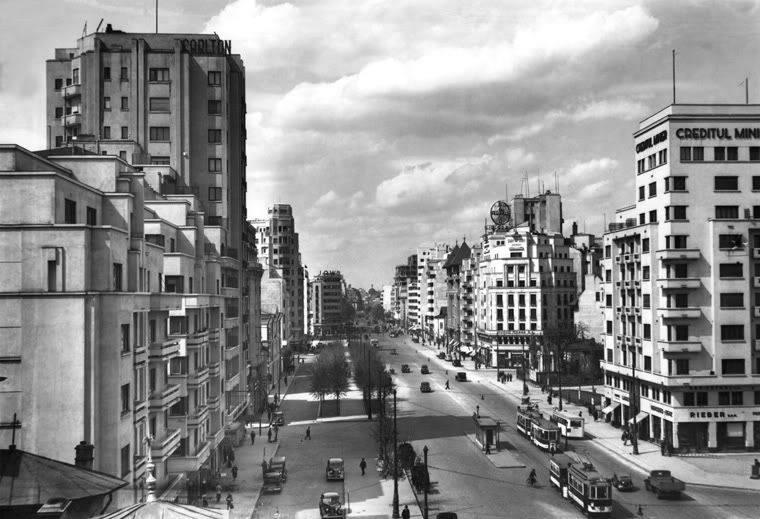


1930s video… can you believe that this is Bucharest and not New York?
Romanian real estate during communism
USSR-backed communist party forced abolition of Monarchy in 1947. In the first decade of communist regime, lead by Gheorghe Gheorghiu-Dej numerous factories were built and economy was growing fast. During 1950s public housing development was limited to redevelopment of the areas destroyed by World War II and in-fill developments to street facades, and small-scale neighborhoods in industrial centers, composed by G+2f, G+3f walk-up blocks, G+7f high-rise blocks, as well as terraced and semi-detached houses.
Mass housing programme began in 1960, large-scale apartment complexes being built at outskirts of every major city, composed by walk-up blocks G+4f and tower blocks G+9f, at minimum 30 meters apart. Like in other communist countries, Romania housing followed Le Corbusier style of towers in a park, low number of streets and cul de sac for parking, number of apartments facing main roads kept at minimum. Watch a video recorded by me:
Nicolae Ceaușescu, known as one of the most brutal leaders in the world, became head of state in 1967. Prefabrication became dominant to reduce building costs per dwelling unit and increase housing production, most blocks being built in 1 year of less, wood floors and wall tiles were no longer provided. Most blocks were G+4f and G+10f, at minimum 20 meters apart, but a small number of blocks are up to Ground+17.
Sistematization started in 1975, that involved demolitions and building apartment blocks on several avenues, enlarged to cope increase of car production. Block patterns changed in 1977, instead of linear and tower blocks surrounded by green spaace, they built rows of blocks of different models around streets, G+8f at major streets and G+4f at minor streets, surrounding a semi-enclosed courtyard used for parking. Minimal distance between blocks was reduced to 12m, green space became minimal, but because of the space occupied by roads, the density (units per hectare) is lower compared with pre-1975 complexes. See Berceni neighborhood, difference between western area built in 1960-1978 and the area east of Soseaua Berceni that is built in 1978-1990.
During 1980s Nicolae Ceaușescu did not wanted to sacrifice agricultural land for urban development, and used 1977 earthquake as pretext to start mass demolitions, many run-down landed houses but also churches and other heritage buildings were destroyed to make room for new apartments.
Nearly 3 million apartments were built by communist government (source: Ziarul Financiar, apartment size indicated by that article are inflated and wrong, probably exclude studio apartments or include balconies).
My personal estimation is that communist apartments housed 40% of the country population of 23 million people in 1990, at average household size of 2.8-3 people, note that 45-50% of country population still live in villages, then several more % live in so-called cities but that have rural living conditions. Romania population dropped to 19 million people as 2021 census and average household size dropped to 2 because of new apartments and houses built.
Bucharest statistics: population 2,067,545 (1992), 1,926,334 (2002), 1,883,425 (2011), 1,716,961 (2021). I made a detailed database of buildings that resulted a total of ~9200 communist blocks, 20800+ staircases, 640,000 communist apartments (+/- 1%) that houses about 85% of the population. Distribution: 18% 1-Room, 42% 2-Room, 33% 3-Room, 7% 4-Room, <0.1% 5-Room, average apartment size 55 sqm, 2.8 people per family and 20 sqm per capita. In the smaller cities, distribution is 5-20% 1-Room, 50-65% 2-Room, 25-35% 3-Room, 3-5% 4-Room, higher share of “comfort 2/3” apartments, so the ratio can go down to 10 sqm per capita. Estimation may have an error margin due to people residing in small cities and villages but actually living in big cities. See detailed statistics based on my research.
Over 100 different block models that were built all over Romanian cities (see most popular floor plans, designed by me). Most blocks are composed by apartments of different sizes on same staircase, which were allocated according number of people in each family. Additionally non-standard blocks were built, to give a distinctive image of each city, or for odd-shaped streets.
You enter in apartment in a hallway, from where are doors to living room, kitchen and bedrooms, so the low number of bedrooms is compensated by using living room for sleeping purposes. About half of apartments, mostly pre-1975 ones have passing-thought living room, such layout popular in America and Asia, is valuated lower in Romania, due to low number of bedrooms.
The government regulated the size of living room and bedrooms, while the hallways size vary depending by apartment layout. Average size of “comfort 1” apartments built between 1960 and 1985: 1-room 30-32 sqm, 2-room 44-48 sqm, 3-room 56-60 sqm, 4-room 74-80 sqm. After 1985 the sizes were 10-20% bigger. In addition “comfort 2” apartments introduced in 1968: 1-room 24-26 sqm, 2-room 36-38 sqm, 3-room 48-50 sqm, 4-room 58-60 sqm, and “comfort 3” apartments were built in 1968-1974: 1-room 16 sqm, 2-room 26-30 sqm, 3-room 35-40 sqm, 4-room 45-50 sqm.
Note: according Romanian law, internal size is quoted, excluding wall thickness or balconies.
Despite of large number of distinctive floor plans, all blocks were gray and ugly. Balcony size vary from block to block, even between one floor to another, possible attempt to break the monotony, but in my opinion is an aesthetic disaster. Closure of balconies after fall of communism made everything uglier.
Public housing in Romania: The BEST (Unirii Bulevard) vs The WORST (Ferentari District)

Two typical cities (Botosani and Vulcan), aerial view… see the amount of colorless

Caged balconies that remind me of Hong Kong… but this is Romania (Ferentari neighborhood)!

Communist public housing is known as low-quality housing, however if in Singapore all blocks built up to 1990 had lifts stopping every 4-5 floors (same for social housing built in UK and USA), Romania public housing taller than 5 floors had lifts stopping on every floor since earliest times (same for pre-war private blocks too). Please note that majority of blocks are walk-up (G+4), without lift or refuse chute, several blocks share an outdoor trash bin but people lazy to go downstairs throw the trash out of window.
Since 1982 Ceaușescu became obsessed to pay the country foreign debt, thus increased workdays from 5 to 6, rationalized food and gas, limited television to 1 channel broadcasting only 2 hours per day, mostly propaganda, turned off district heating at random times and created daily power blackouts to “save energy” for heavy industry, increased production by quantity instead of quality, and tried to export as much is possible by creating shortages of food and other goods in his own country, but the products were noncompetitive on export markets and the profits were small. People had to wait few years to buy a car, a TV set, etc. This dramatically lowered the living standards of Romanians. The foreign debt was fully paid in mid-1989 but the heavy exports continued, population tired of austerity started 1989 Romanian Revolution on 16 December, about 100 people where shot by army at orders of Nicolae Ceaușescu and his wife Elena, until they were arrested on 22 December and sentenced to death on 25 December. On 22-25 December another 1000 people were killed and by today we still do not know who is guilty for this.
What intrigues is what were the living conditions in other communist countries and how they overthrown the communist governments non-violently, without killing their leaders.
Romanian real estate after fall of communism
The new government formed by second-ranked communists privatized most factories and allowed tenants to purchase apartments, turning Romania into one of the countries with highest home ownership ratio in the world. Property law give too much rights to owners, making difficult for government to take private land back for public developments, consequently highway construction progress very slow.
Economy worsened, unemployment, inflation, rising criminality, etc. Prices were rising more than salaries, as many local factories of cheap products were closed, many goods started being imported and this increased cost of living. This is valid for most former eastern block countries. During 1990s only East Germany and Czech Republic managed to recover and reach gross domestic product peak from communism, while Romania reached during 2000s. Lots of violent anti-government protests still happen across Eastern Europe, including 1990, 1991 and 1999 Romanian Mineriads, 2011-2012 Russian protests, 2012 Romanian anti-Basescu protests, and 2013-2014 Euromaidan (Ukraine). Romanians demand higher salaries, but the country economy is not powerful enough to pay them.
Government just improve existing infrastructure and follow 1980s principle to not expand cities into agricultural land. Everything is done by private developers in a chaotic way. Many houses and apartments being built in villages surrounding major cities, which unlike desirable American suburbs, the Romanian suburbs are not desirable because there are no paved roads, sewage, schools or public transport. Private developers also hunt houses inside cities to demolish them and build apartment blocks like in pre-war period, without any masterplan.
Romania and Bulgaria joined European Union as 1 January 2007, making easier for foreign real estate investors to come there. Numerous new apartment projects were launched, many luxury apartments aimed to new affluent class of Romanians. Romania experienced the biggest property bubble in the world, apartment prices rising 10 times between 2002 and 2008, reaching prices comparable with Western Europe despite that salaries although also growing, they are among lowest in Europe.
After 20 years of capitalism, Romania was hit hard by 2008 recession. Gross domestic product felt down for 5 consecutive years, and real estate prices in Bucharest felt from 2300 euro / sqm in 2008 to 1300 euro / sqm in 2009, continued to fall to 1000 euro / sqm in 2014 then stagnated (source: imobiliare.ro), people no longer able to pay mortgage, banks put their homes at auction, and, as I have seen in the news, there were cases in which house value was not enough to pay the debt so they had to sell at auction houses of family relatives too. Number of apartments built in 25 years of capitalism (1990-2015) is lower than what was built in 1 year of communism. Half of apartments started in 1990-2010 are abandoned as 2015, due to recession.
Massive emigration made Romania to suffer from lack of skilled workforce, especially in health and education system. All these problems keep foreign investors away and raise concerns about the future of this country.
Chaotic developments and real estate corruption
Under capitalist government, the cities had a chaotic development. Bucharest Old Town, instead of being pittoresque like in other European capitals, is dominated by abandoned buildings inhabited by homeless people robbing tourists, heritage buildings nationalized by communism government are won in the court by former owners who leave them for self-destruction to sell the land to developers who build steel and glass buildings which damage image of the old town.
If the apartment neighborhoods build by communist regime were not already too dense, authorities privatized the public green space between buildings, which sold to developers who build new apartment buildings, such as below example from Floreasca (in Singapore condos, the open land between buildings belong to residents too, not just the land of building footprint).
Closed factories are also redeveloped into residential and commercial developments, while the infrastructure was not designed to handle additional traffic. But since land availability inside cities is limited, most new developments take place at city outskirts, on former arable land, where utilities are non-existent, as well as public transport and education facilities. At least in my city Ploiesti, NO school was built after 1990 (as 2018).
Corruption in real estate is very high, despite of strict laws about minimum room and apartment size, as well as minimum 1 parking lot per apartment, many architects violate them and still get building permit from corrupt authorities, and once building permit is given, they modify the project adding more floors at top of building and also convert the basement parking into additional dwelling units, and once all units are sold, the workers often leave without paving the parking, build a children playground, connect each apartment to utilities, etc.
During 2000s, new apartments had larger rooms compared with communist apartments, big as 40 sqm 1-room, 70 sqm 2-room and 100 sqm 3-room, but majority are 1- and 2-room, and are still too expensive for typical romanian worker. During 2010s there is a trend of building smaller apartments.
Landed housing
Landed housing in Romania (and rest of Eastern Europe) is very spread, in rural areas and small cities, houses have yards over 1000 sqm, there are many villages with population small as 1000 people, but over 5 km long, sometimes a single-road villages.
In cities, lot frontages are narrow and many houses are attached to North border of lot (or North-East, North-West). Courtyard surround the house on 3 sides. in Transylvania many houses are L-shaped by having additional wing parallel to street, forming a continuous street facade.
There are very few terraced or semi-detached houses in Romania.
The good parts of Romania
– The beautiful villages in Transylvania, where the traditions are preserved for centuries.
– Well developed mountain tourism, ski resorts, thanks to communist regime.
– The wealth distribution is pretty good, thanks to communist regime who eliminated rich people. Recently there are few homeless people and few too rich people, but not as worse like in Latin America countries which have similar GDP per capita but significant population is under poverty line. Note that many countries outside Europe are fast-developing so may exceed Romania soon.
– I have NOTHING to praise about post-1989 capitalist regime.
More details about living conditions, see Life in my country page.
The megalithic projects of Nicolae Ceauşescu
Many foreigners associate Ceausescu with the oversized Palace of the Parliament, but in reality it is just one of the 7 megalithic buildings. 7 square kilometers were razed since 1983, 40.000 people were evicted by a single day’s notice, a lot of historical monuments were destroyed. This represents the largest peacetime destruction in the world history. Most of these projects were hit by 1989 revolution and are still unfinished today. They show the inabilities of capitalist idiots compared with communist regime. Supposedly, Ceausescu was inspired by 1971 visit in North Korea. However I studied North Korea too and I do not see much similarity in architecture of Romania.
Casa Poporului (People’s House, now Palace of the Parliament), it is also the largest government building in the world and largest building named “palace”, 270 by 240 meters, 86 meters tall, 12 floors plus 8 basement floors including nuclear bunker, it sits on a 1.8 sq km site. Construction started 1984, scheduled to be completed in 1990, but due to fall of communism, construction slowed down and was not used until 1997 when the parliament moved in it, today the basement floors are still unfinished.
Casa Radio (Radio House), 200 x 145 meters, started in 1986 to become National Museum of Communist Romania. Although not completed, Nicolae Ceauşescu used this building to watch the last National Day parade on 23 August 1989. In 1992 it was transferred in administration of Romanian Radiotelevision and named Casa Radio. In 2006 it was sold to an Israel investor who planned to demolish 70% of building and convert it in mall, offices and apartments, but the project named Dâmboviţa Center has been abandoned due to 2008 recession.
Academy House, 220 x 80 meters, located in the left side of Parliament. Opening date unknown, back side of building still not finished.
Ministry of Defense House, 195 x 80 meters, located behind Parliament. Construction and opening date unknown.
Unknown-name building, left side of Defense House, 140 x 80 meters, opened in 1999 as JF Marriott Hotel.
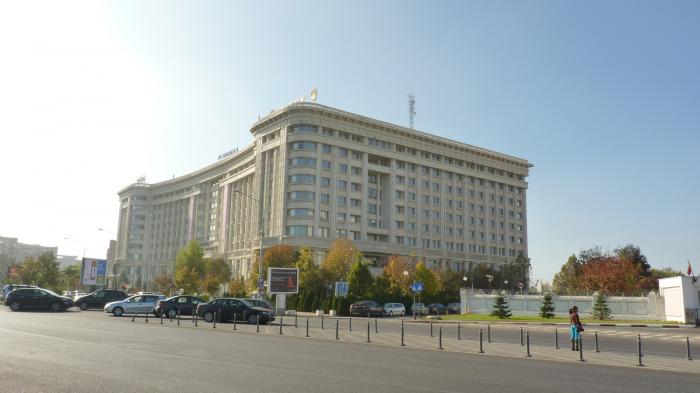
Biblioteca Naţională (National Library), 120 x 150 meters, construction started in 1986, abandoned after 1989, resumed in 2009, facades partially demolished and rebuilt with glass, making it very ugly in my opinion, and opened in 2012.
Magazin Junior (a mall), opposite Library, 120 x 50 meters, opened in 1987 but ground floor only, closed in 1992. Rebuilt during 2000s, since 2006 it houses the Bucharest Court.
Unirii Boulevard & Civic Centre, public housing complex with luxurious and lavish decorations, build around the 7 megalithic buildings and a monumental boulevard measuring 3 km long and 90 meter wide.
Centrul Cultural, a project with no info available, except what is seen from air in the center of above aerial photo: a massive foundation in the size of 230 x 150 meters. We don’t know if there was planned to be a building or an open-air plaza.
Circul Foamei, a series of identical buildings, 100 x 60 meters. Started in late 1980s and intended for food distribution, 2 of them were finished in 1989 while the others remained abandoned until 2000s when were converted in malls or demolished.
Văcărești Park, a massive 2 sq km amusement park with a massive lake in middle of Bucharest, started in 1988, today it looks like a jungle.
Unfinished apartment buildings, construction of each block in communist times took about 1 year, so hundred of apartments blocks were caught by 1989 revolution. Some of them were turned into offices during 1990s, others were completed as residential during 2000s, but few of them remained abandoned even in 2014.
4 apartment blocks in Nerva Traian street, abandoned in 1989 and converted in office buildings

Unfinished block in Aviatiei district

Bucharest Metro, one of few communist projects that actually improved the standards of living. It was first planned in 1938 during King’s regime, scrapped due to WW2, started in 1975 by Ceausescu’s regime, scheduled to be completed in 2000, with 8 lines totaling ~100 km. First line opened in 1979 and reached 55 km on 3 lines at the time of revolution. From 1990 to 2010 the capitalist regime managed to finish and open additional 8 km of the lines started by communism regime, so never mind about starting new lines.
Cernavoda nuclear power plant, started in early 1980s and planned with 5 reactors, to date only 2 reactors have been completed (first in 1996 and second in 2007), producing 18% of national energy consumption.
Danube – Black Sea Canal, 95 km long, 90 m wide, 7 m deep, started in 1949 with political prisoners who opposed communist regime, dubbed as “graveyard of the Romanian bourgeoisie”, construction halted in 1953 because surpassed the resources available to the Romanian economy in the 1950s, re-started in 1973 by Nicolae Ceaușescu and opened in May 1984, plus northern arm in October 1987, today it is viewed as unnecessary projects because based on its current revenues, several hundred years are necessary to recover the cost of construction, estimated at 2 billion dollars.
Danube – Bucharest Canal, 73 km long, designed to make the capital city also a river port, it was started in 1986 and was 60% completed in 1990 when it was abandoned.
About
Page published for first time in 2010 and updated over next years with more information found by me or provided by visitors. Text written by me (Teoalida) and images taken from Wikipedia, Panoramio and other websites. Do you have useful information that worth adding? Did you found an error or have a contradictory opinion? Leave a comment!















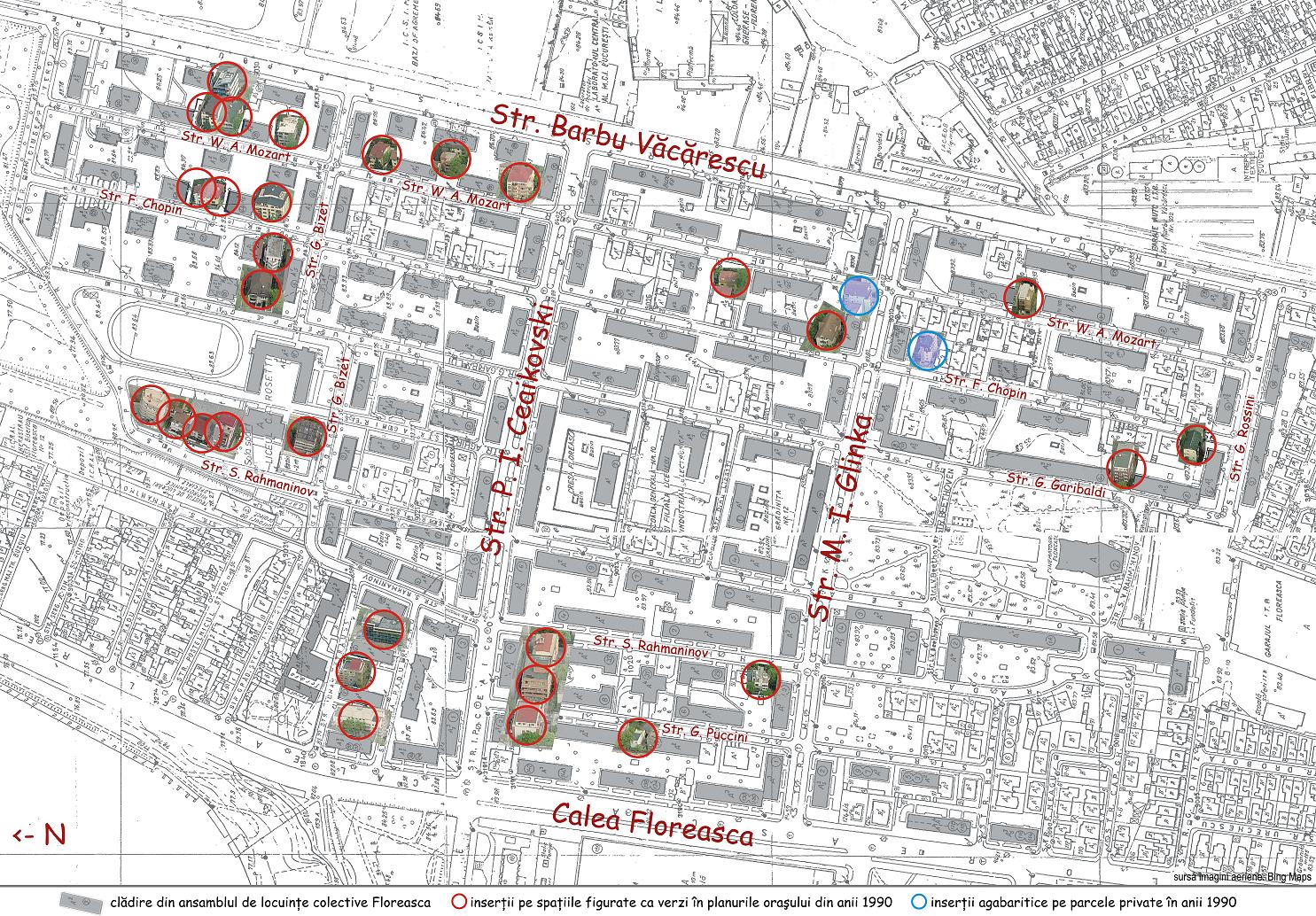


















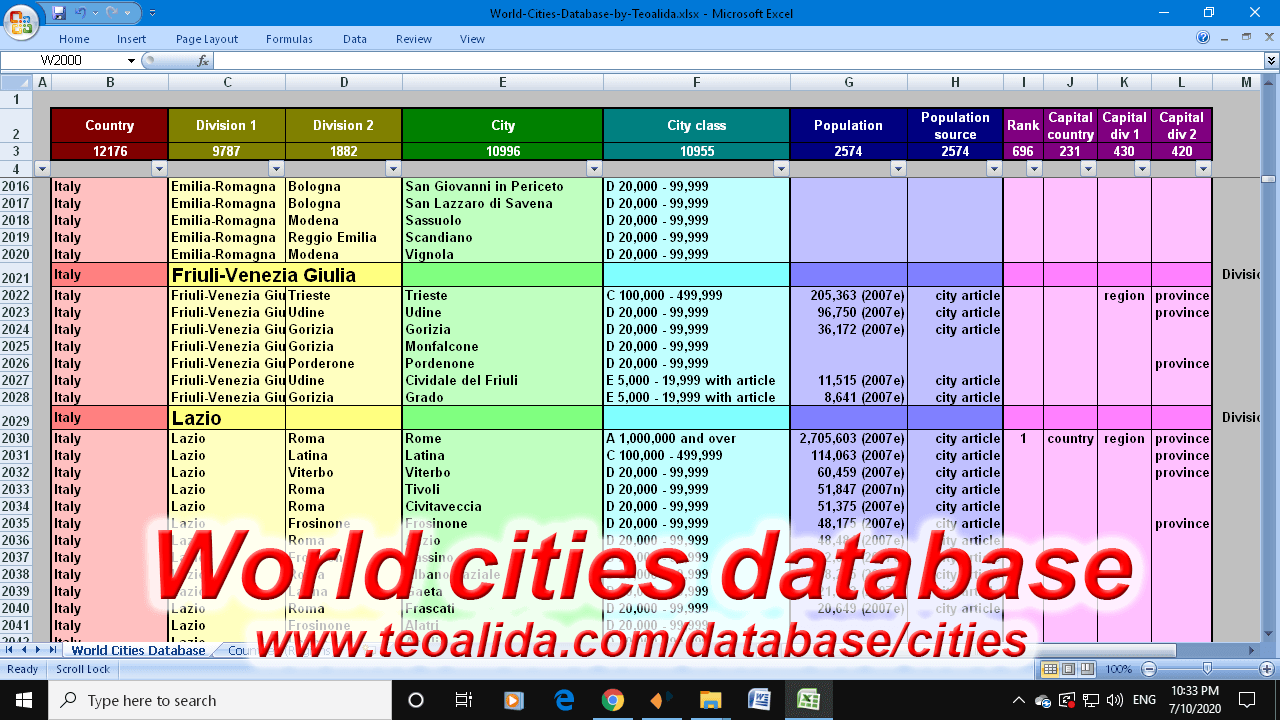
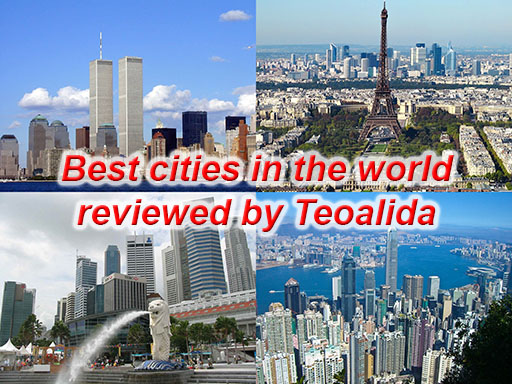
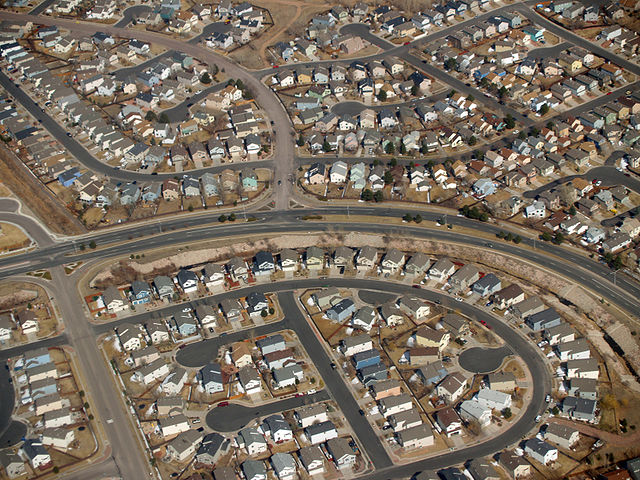
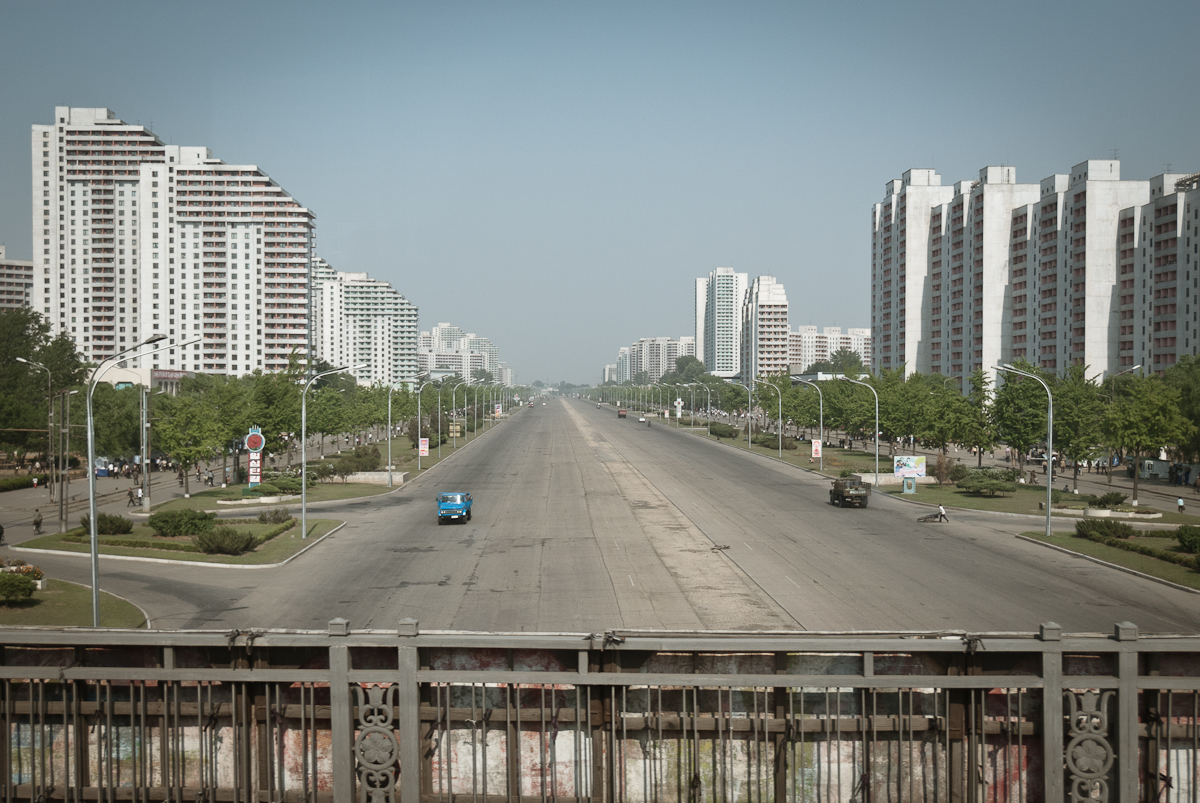
Its not hard at all to believe you are Romanian.